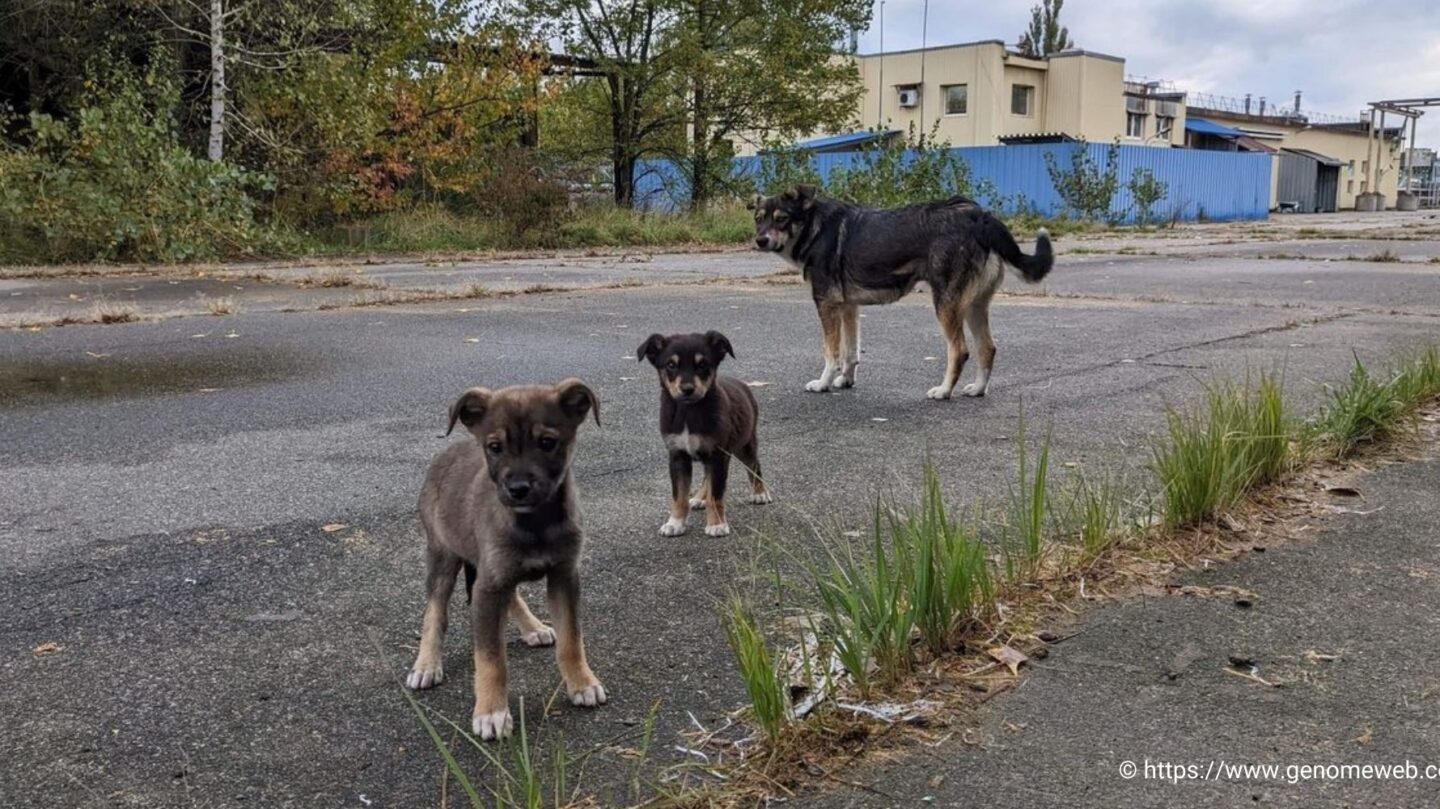The Chernobyl nuclear disaster in 1986 left behind a wasteland of abandoned buildings, contaminated land, and a legacy of radiation that still lingers today. But amidst this radioactive zone, a surprising population has not only survived but thrived: feral dogs. These animals, descendants of pets left behind by fleeing residents, have adapted to an environment that would be lethal to most species. Now, scientists are turning to these resilient canines for insights into how radiation affects evolution and survival in extreme conditions.
Life in the Chernobyl Exclusion Zone
The Chernobyl Exclusion Zone (CEZ) covers about 2,600 square kilometers of Ukraine and Belarus, an area deemed unsafe for human habitation due to lingering radioactive contamination. However, over the past few decades, wildlife—including wolves, deer, birds, and dogs—have reclaimed the area.
Among these animals, the feral dogs are the most closely observed. Estimated to number around 300, these dogs live near the Chernobyl reactor and in the surrounding villages, often relying on scraps from workers and scientists who occasionally visit or monitor the site. What makes them particularly interesting is their ability to survive—and possibly evolve—under chronic radiation exposure.
Studying Radiation’s Impact on Genetics
Radiation is known to cause mutations in DNA, which can lead to cancer, birth defects, and other health issues. But it can also be a force in natural selection. Over time, some mutations may provide advantages that help a species adapt to harsh environments.
Researchers have begun studying the genomes of Chernobyl’s feral dogs to determine how they differ from dogs living outside the zone. In a 2023 study published in Science Advances, scientists analyzed the genetic material of over 300 dogs from the CEZ. They discovered that these dogs are genetically distinct from other dog populations in Ukraine.
Key Findings:
- The dogs near the reactor have higher exposure to radiation, yet many appear healthy.
- Certain genetic traits may be linked to radiation resistance or enhanced repair mechanisms for damaged DNA.
- There is evidence that these dogs have adapted to low-food environments and high-stress conditions.
These findings suggest that radiation is not just a destructive force, but also a potential driver of evolutionary change.
Evolution in Real Time
One of the most fascinating aspects of the Chernobyl dogs is that scientists can observe evolution in real time. While most evolutionary processes take thousands or millions of years, extreme environments like Chernobyl can accelerate change.
By comparing generations of dogs, researchers hope to identify:
- How quickly genetic adaptations arise.
- Which genes are associated with survival advantages under radiation.
- The long-term health effects of living in radioactive zones.
This kind of study offers a rare opportunity to understand how species respond to human-caused environmental disasters, and how life finds a way to adapt even in the most unlikely conditions.
Implications for Human Health and Space Exploration
The implications of studying Chernobyl’s feral dogs go beyond wildlife biology. Understanding how animals adapt to radiation could help scientists develop better radiation therapies for humans, or even design strategies to protect astronauts from cosmic radiation during long space missions.
If specific genes or biological mechanisms help these dogs survive, they might be used to:
- Enhance radiation resistance in humans through medicine or gene therapy.
- Improve environmental monitoring by identifying biomarkers of radiation exposure.
- Offer insights into the limits of life on Earth and beyond.
Ethical and Environmental Considerations
While the resilience of Chernobyl’s dogs is inspiring, it also raises ethical questions. These animals live under constant threat of radiation, hunger, and disease. Efforts have been made to provide veterinary care, sterilization, and even adoption programs for some of the dogs, but the challenges remain significant.
Additionally, the research conducted must balance scientific inquiry with the welfare of the animals, ensuring that they are not exploited or harmed in the process.
Conclusion: Nature’s Unexpected Survivors
The feral dogs of Chernobyl are a powerful symbol of nature’s ability to adapt and survive, even in places where life seems impossible. Their existence offers valuable lessons about evolution, resilience, and the unforeseen consequences of human actions.
As scientists continue to study these unique animals, they not only unravel the mysteries of radiation’s role in evolution but also gain a deeper appreciation for the complex relationship between life and the environment. In the shadow of one of history’s greatest nuclear disasters, the story of Chernobyl’s dogs is a testament to the enduring strength of life itself.
